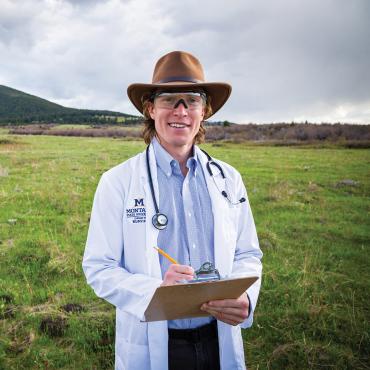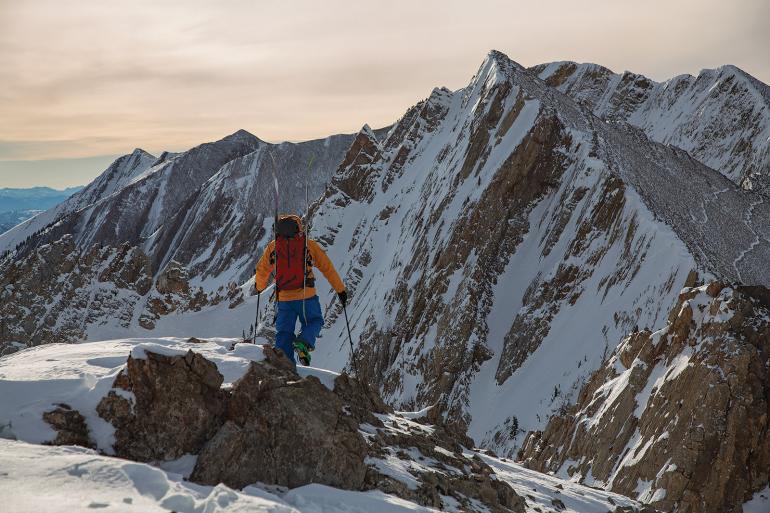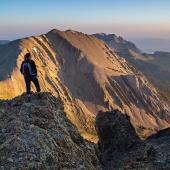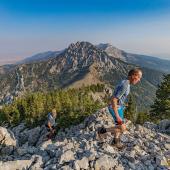Shifting Seas
Tracking the evolution of Earth in the Bridgers.
Ah, the Bridgers. Our closest mountain range, offering nearly the full gamut of outdoor activities, with hiking, biking, running, hunting, climbing, snowshoeing, and of course, skiing. Anyone who has topped out on the Bridger Ridge during winter knows why this terrain is so renowned among expert snow-sliders. The Ridge is densely packed with long, steep, narrow chutes, and with its crest running north-south, prevailing winds from the west blow buckets of snow onto the east side. If you’ve spent a lot of time up there, you may have wondered, why does the ridgeline run so straight? What could’ve caused so many tight gullies to form? If you read our last issue, you’ll know that, like the Beartooths, the Bridgers were formed by plate tectonics. But the characters of these ranges couldn’t be more different. While the Beartooths consist of three-billion-year-old igneous and metamorphic rocks, gouged by cycles of glacial activity, the Bridgers contain almost entirely sedimentary rocks, varying widely in composition between different layers. More on that later.
All sedimentary rocks are originally deposited in horizontal layers. But as you can imagine, when these rocks are uplifted into mountains, they break into a jumble of folds and faults. Think of the rocks as a layered cake: if you were to push upwards in the middle of the cake, the layers would break apart into steeply-angled fragments. Sometimes the fragments are uplifted so aggressively that they turn dead-vertical, as is the case in the Bridgers. Here, the oldest sedimentary rocks are over 500 million years old, while the youngest are 70 million years old—remember that age from before? It’s when the mountains began to uplift, ceasing deposition of sediments and transitioning to an erosive environment. This creates a unique opportunity to study Earth’s history because as the vertical fragments erode, a cross-section is carved through all of the layers, rather than only the uppermost layers. The progression of layers represents passing of time, and variations in sediment composition between different layers indicate different depositional environments. For example, sandstones represent a beach, limestones represent a coral reef, and shales represent the deep ocean floor. If you see shale on top of sandstone, you can infer that sea level rose dramatically because you have ocean floor on top of a beach. If you see limestone with channels of sandstone inside it, sea level fell dramatically because you’re eroding a beach into a coral reef.
We can plot these trends of rising and falling sea levels to see how Earth’s climate has fluctuated between warm, wet periods and cold, dry periods. Furthermore, these sedimentary rocks contain fossils, and by tracing changes in the fossils we can see how life on Earth has evolved over time. We can even combine our observations of fossils with changes in sea level to infer how changes in climate have historically affected life on Earth. What we find is that life does not respond well to rapid changes in climate! All of the major extinction events in Earth’s history are coupled with dramatic changes in sea level—go figure.
Not only do the vertically-tilted sedimentary rocks of the Bridgers give us a detailed look at Earth’s history, they also create a dense concentration of long, narrow gullies near the Bridger Ridge due to alternating layers. The Ridge is formed almost entirely of limestone—the most weather-resistant type of sedimentary rock—but interspersed layers of sandstone and shale are more rapidly eroded, so gullies form between the layers of limestone. This is why skiing in the Bridgers is so incredible, in geologic terms. But the Bridgers aren’t the only winter-sport mecca in the Bozone... stay tuned for our next issue, where we’ll take a look at the Gallatin Range and Hyalite Canyon, to find out what happens when mountains are uplifted so rapidly that molten rock blows its way above the Earth’s surface.
Jack Taylor is a skiing addict and geology nerd who holds exceptionally superfluous knowledge on sedimentary rocks of the northern Rockies.














